Weight Loss Tips for Summer That Will Actually Work!
Losing weight for summer is one of the most common health goals—and one of the most misunderstood.
Too many people fall for crash diets or punishing workout regimens that yield short-term results but long-term setbacks.
Instead of chasing quick fixes, this guide offers evidence-based weight loss tips for summer that will help you feel confident, strong, and lean in a way that actually lasts.
As a professional athlete with a master’s degree in Nutrition Education, I’ve seen firsthand what works, and what doesn’t.
These weight loss tips for summer are based on science, not trends.
Why Summer Is the Perfect Time to Start Losing Weight
Longer days, warmer temperatures, and an abundance of fresh produce make summer one of the best seasons for creating sustainable health habits.
Outdoor workouts feel more enjoyable, hydration becomes a natural priority, and your circadian rhythm aligns more easily with a healthy sleep-wake cycle.
Increased exposure to sunlight also supports mood and metabolism through vitamin D synthesis, which research shows can impact weight regulation and energy balance (Wacker & Holick, 2013).
In fact, using the additional sunlight and natural momentum of summer to your advantage is one of the best health tips for summer overall.
Small shifts in your daily routine, like walking after dinner or adding seasonal fruits and vegetables to your meals, can significantly impact body composition.
Understand the Difference: Fat Loss vs. Weight Loss
Before jumping into a diet or workout plan, it’s important to clarify your goal.
Are you trying to lose weight or burn fat?
- Weight loss reflects a reduction in total body mass (fat, muscle, and water).
- Fat loss is a more targeted approach focused on burning adipose tissue while preserving lean muscle.
Sustainable fat loss improves insulin sensitivity, preserves metabolism, and creates the “toned” look most people want.
My weight loss tips for summer are specifically designed to help you lose weight by burning body fat, not by simply reducing water weight or sweating excessively, so your results are healthy, sustainable, and rooted in real fat loss.
How to Lose Weight for Summer
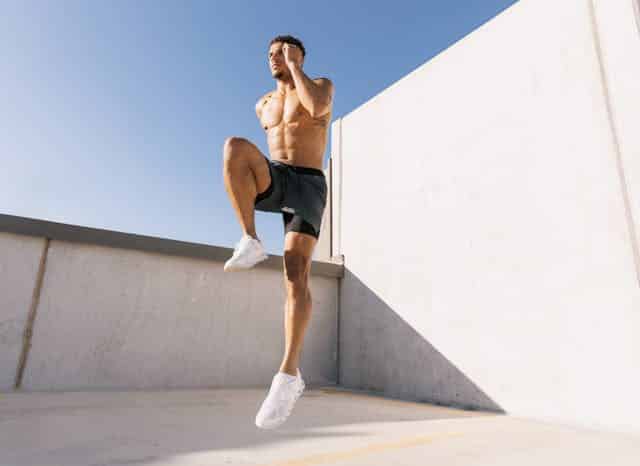
Losing weight for summer doesn’t mean resorting to crash diets or excessive workouts; it’s about building smart, sustainable, healthy habits that help you feel confident, energized, and strong in your body.
Whether you’re preparing for beach season or just want to feel lighter and healthier during the warmer months, this guide will show you how to burn fat efficiently, eat with purpose, and take full advantage of everything summer has to offer for improving your body composition.
Step 1: Set Clear, Realistic Summer Body Goals
Using the SMART goals framework will help make your summer weight loss journey more achievable:
- Specific: “I want to lose 10 pounds and reduce 3% body fat by August 1.”
- Measurable: Track progress using a smart scale, tape measure, and photos.
- Achievable: Aiming to lose 1–2 pounds per week is ideal.
- Relevant: Align your goal with long-term health, not short-term aesthetics.
- Time-bound: A 6–10 week summer timeline is enough to see meaningful changes.
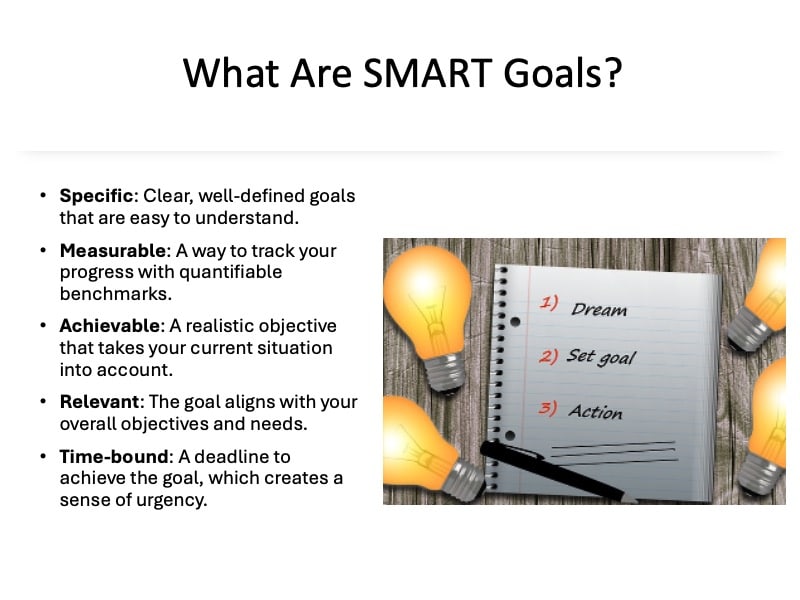
Breaking this into smaller milestones keeps motivation high and progress visible.
Step 2: Use the Energy Balance Equation and Calculate Your Calorie Needs

To lose fat, you need a calorie deficit, but not at the expense of muscle, hormones, or mental health.
Your goal should be to eat fewer calories than you burn while still providing your body with the nutrients it needs to preserve lean mass, regulate metabolism, and fuel daily activity.
Start by estimating your Total Daily Energy Expenditure (TDEE), which is the total number of calories your body burns each day, including resting metabolism, physical activity, and the thermic effect of food.
You can use a TDEE calculator online by inputting your age, gender, height, weight, and activity level.
Once you know your TDEE, subtract 250–500 calories to create a moderate, sustainable deficit that encourages fat loss without triggering metabolic slowdown or excessive hunger.
Focus on These Macronutrients:
- Protein: Boosts metabolism, increases the thermic effect of food, reduces hunger, and preserves muscle during weight loss. Aim for 0.7–1 gram of protein per pound of body weight.
- Fiber: Increases satiety, stabilizes blood sugar, and supports gut health, which are all critical factors for managing hunger and sustaining weight loss. Try to consume at least 25–30 grams of fiber per day from whole food sources.
- Dietary Fats: Essential for hormone production, nutrient absorption (especially fat-soluble vitamins), and long-term brain health. Choose sources like nuts, seeds, olive oil, avocados, and fatty fish.
- Carbohydrates: Provide energy for high-intensity exercise and support recovery. They also help spare protein from being used as an energy source, allowing it to focus on muscle repair and retention. Prioritize complex carbs like oats, sweet potatoes, and fruits.
A high-protein, fiber-rich, plant-heavy diet with moderate amounts of healthy fats and complex carbs provides metabolic flexibility, supports consistent energy levels, and fuels effective workouts, all while helping you stay in a sustainable calorie deficit.
Step 3: Create a Simple Weight Loss Meal Plan
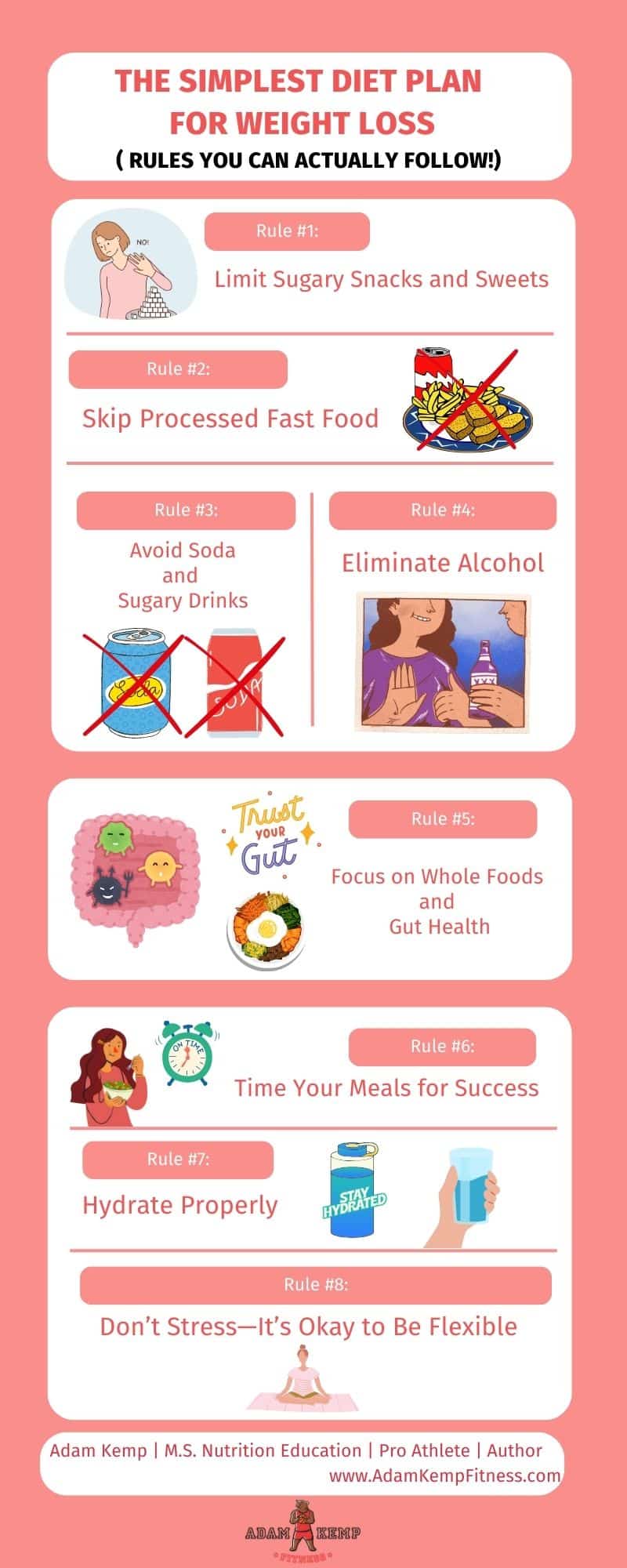
A successful weight loss diet plan for summer doesn’t need to be complicated, it just needs to be consistent, nutrient-dense, and tailored to your calorie needs.
Focus on whole, minimally processed foods that keep you full, energized, and satisfied throughout the day.
Build each meal using high-quality sources from the key macronutrient groups:
- Lean proteins: chicken breast, wild-caught fish, eggs, Greek yogurt, tempeh, or tofu
- Fiber-rich carbohydrates: oats, quinoa, beans, lentils, sweet potatoes, and berries
- Healthy fats: extra virgin olive oil, avocado, chia seeds, almonds, walnuts
- Hydrating vegetables: spinach, cucumbers, zucchini, tomatoes, bell peppers, leafy greens
These foods support digestion, control hunger, and help regulate blood sugar levels—all essential for burning fat effectively.
Use this visual portion guide for a balanced fat-loss-friendly plate:
- 1 palm of protein
- 1 cupped hand of carbohydrates
- 1 thumb of healthy fat
- 1–2 fists of non-starchy vegetables
For sustained energy and better adherence to your calorie goals, add simple snacks between meals like:
- A scoop of protein powder blended with almond milk and frozen berries
- Hummus with raw carrots or bell pepper strips
- A small apple with a tablespoon of natural peanut or almond butter
Planning ahead, prepping ingredients in bulk, and eating at regular intervals will make it easier to stay in a calorie deficit without feeling deprived.
Step 4: Stay Hydrated and Drink Smart
Hydration plays a crucial role in weight loss—especially during the summer when higher temperatures increase sweat loss and fluid needs.
Water not only helps regulate appetite and support digestion, but it also plays a key role in fat metabolism by assisting the kidneys and liver in processing and eliminating fat byproducts (Dazıroğlu & Tek, 2023).
A good rule of thumb is to drink at least half your body weight in ounces of water per day. For example, a 180-pound person should aim for 90 ounces daily, and more if they’re active or spending time in the sun.
Drinking water before meals has been shown to reduce hunger and overall calorie intake, while proper hydration improves energy levels and athletic performance, which are both critical for maintaining an active lifestyle during your weight loss journey.
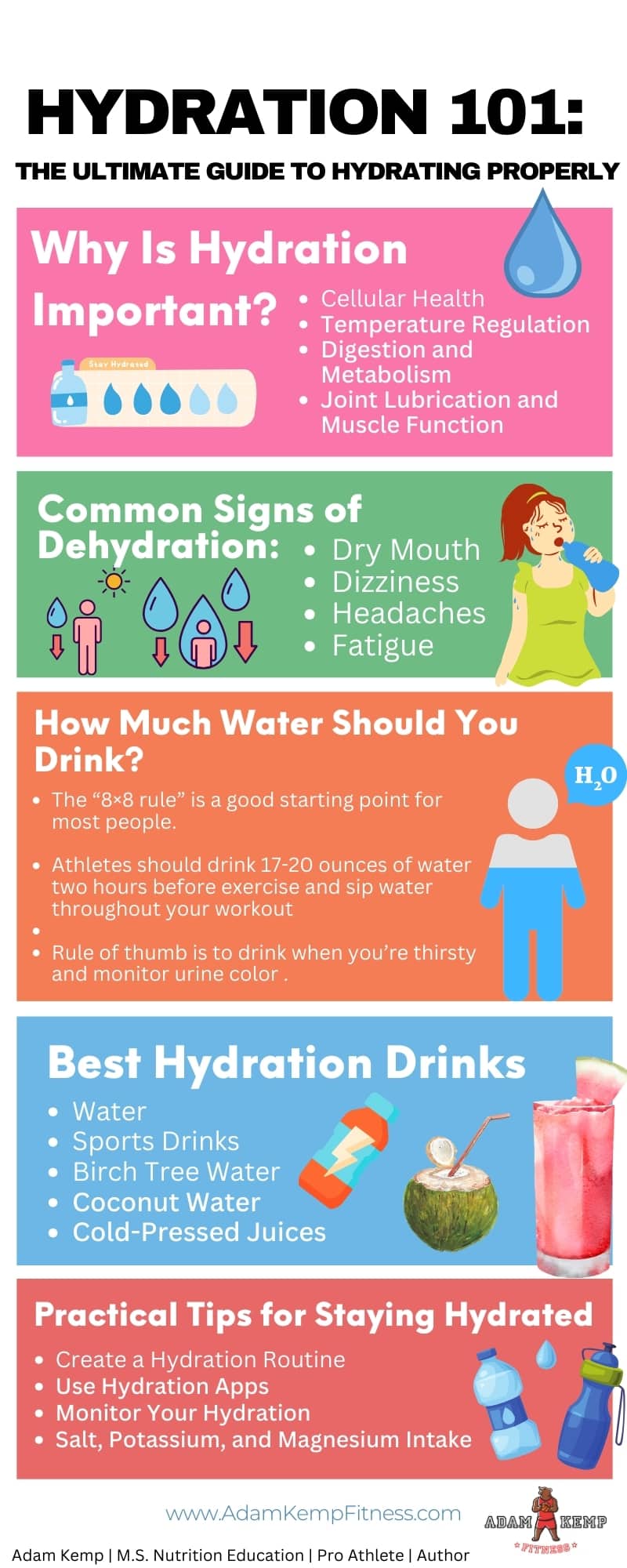
Avoid These Common Beverage Pitfalls:
- Sugary drinks (sodas, sweetened teas, fruit juices): Often packed with empty calories and cause spikes in blood sugar that promote fat storage.
- Alcohol: Not only is alcohol calorie-dense, but it also lowers inhibitions, increases appetite, slows fat oxidation, and impairs sleep and recovery.
Better Beverage Choices to Support Weight Loss:
- Green Tea: Green tea is rich in antioxidants like EGCG (epigallocatechin gallate), which has been shown to increase thermogenesis and fat oxidation. Regular consumption is also associated with reductions in belly fat, making it one of the best natural fat-burners.
- Yerba Mate: Yerba mate contains caffeine, theobromine, and polyphenols that can enhance metabolism and curb appetite. Compared to coffee, it also provides a smoother, less jittery energy boost and may improve fat oxidation during low—to moderate-intensity exercise.
- Oolong Tea: This partially fermented tea contains both catechins and caffeine, making it especially effective for stimulating metabolism. Some studies suggest oolong tea may boost fat burning by up to 12% after meals and help reduce body fat with consistent use (Rumpler et al., 2001).
- Black Coffee: Black coffee is a powerful appetite suppressant and natural performance enhancer. Drinking it before a workout may help improve endurance and increase fat oxidation—just skip the added sugar and calorie-dense creamers.
- Celsius Energy Drinks: Celsius contains caffeine, green tea extract, guarana, and other thermogenic ingredients that can increase metabolism and support fat burning. It’s a cleaner alternative to traditional energy drinks and works well as a pre-workout or mid-afternoon energy boost. For a more eco-friendly and cost-effective option, try Celsius On-the-Go Packets, as they combine the same functional ingredients in a portable, convenient powder packet.
- Sports Drinks: On hot days or after sweaty workouts, it’s important to replace electrolytes like sodium, potassium, and magnesium to prevent fatigue and support performance. Instead of traditional sports drinks loaded with sugar and artificial dyes, some of the best sports drink options include:
- Celsius On-the-Go Hydration Packets – Clean electrolytes and caffeine for hydration and fat burning.
- Gatorade Fit – Lightly sweetened, no added sugar, with key electrolytes and vitamins.
- Prime Hydration – Zero sugar, BCAAs, and electrolytes in a low-calorie drink.
- Homemade electrolyte mix – Try coconut water with a pinch of sea salt and lemon juice.
- Infused Water:Add fresh slices of citrus fruits, berries, mint, or cucumber to enhance flavor without adding calories. This simple strategy makes drinking more water enjoyable, especially if you struggle with plain water.
Staying hydrated with the right beverages helps optimize energy levels, support workout recovery, and promote efficient fat loss all summer long.
Staying consistently hydrated is one of the simplest yet most underrated weight loss strategies, as it supports everything from energy levels and digestion to fat metabolism and workout recovery.
Step 5: Move More & Use the Summer Weather to Your Advantage

You don’t need a gym to get lean. Summer provides endless ways to be active and get fit without going to the gym.
Best Outdoor Summer Activities for Fat Loss:
- Walking
- Swimming
- Hiking
- Biking
- Beach volleyball
- Bodyweight exercises
Start with 30–60 minutes of movement 4–6 days per week.
Add strength training 2–3 times per week for muscle preservation and a metabolism boost.
Step 6: Optimize NEAT (Non-Exercise Activity Thermogenesis)
NEAT, or Non-Exercise Activity Thermogenesis, refers to the calories you burn during daily activities that aren’t structured exercise, like cleaning the house, doing yard work, or even fidgeting.
Unlike workouts, NEAT activities often feel effortless, yet they can have a powerful cumulative effect on your total daily energy expenditure.
Increasing your NEAT is one of the most underrated and sustainable ways to boost fat loss without added stress on your body.
For many people, especially during summer, NEAT can burn hundreds of additional calories per day, supporting a fat-burning calorie deficit with minimal effort.
Simple Ways to Increase NEAT:
- Take the stairs instead of elevators or escalators.
- Walk while on phone calls or during work breaks.
- Park farther away from store entrances or destinations.
- Do household chores like sweeping, vacuuming, or organizing.
- Tackle yard work like mowing the lawn, weeding, or gardening.
- Stand more throughout the day by using a standing desk or pacing during meetings.
- Set a timer every 30–60 minutes to stretch, walk, or move around briefly.
- Use a step tracker or pedometer to aim for 8,000–12,000 steps per day.
Even small movement “snacks” throughout the day—like air squats, walking lunges, or a few push-ups, can elevate your heart rate and increase total calorie burn.
Over the course of a summer, these micro-movements can dramatically impact your weight loss progress without ever setting foot in a gym.
Step 7: Prioritize Quality Sleep to Support Fat Loss
If you’ve been consistent with your workouts and diet but aren’t seeing results, sleep might be the missing link.
Poor sleep disrupts hormone balance, impairs metabolism, and increases cravings, all of which can sabotage your fat loss progress even if you’re in a calorie deficit.
When you’re sleep-deprived, cortisol levels rise, and hormones that regulate hunger and satiety become imbalanced. Specifically:
- Ghrelin (your hunger hormone) increases
- Leptin (your satiety hormone) decreases
- Blood sugar regulation and insulin sensitivity decline
- Late-night cravings and poor food choices become more likely
Tips to Improve Sleep:
- Stick to a consistent sleep schedule, even on weekends
- Avoid screens 60–90 minutes before bed to reduce blue light exposure
- Keep your bedroom cool, quiet, and dark to promote melatonin production
- Limit caffeine after midday to avoid sleep disturbances
Taking supplements like melatonin or magnesium for sleep can also help you sleep better.
I suggest Qunol Magnesium Glycinate as a safe and effective natural sleep aid:
Last update on 2025-04-22 / This article includes affiliate links/Images via Amazon Product Advertising API. I may earn commissions on purchases made through these links.
Aim for 7–8 hours of high-quality sleep each night to support muscle recovery, regulate metabolism, and optimize fat-burning potential.
Step 8: Manage Stress to Prevent Fat Storage and Cravings
Chronic stress activates the body’s fight-or-flight response, increasing levels of cortisol.
This hormone promotes fat storage, particularly around the abdomen, and disrupts metabolic health.
Elevated stress also drives emotional eating, cravings for sugar and processed foods, and inconsistent energy levels that make regular exercise harder to maintain.
Incorporating daily stress-management strategies not only improves mood and focus but also creates a hormonal environment more conducive to weight loss.
Simple and Effective Ways to Lower Stress:
- Breathwork or guided relaxation using tools like the Breathwrk App or Insight Timer
- Early morning sunlight exposure to reset your circadian rhythm and support mood
- Prayer, journaling, or gratitude practice to release emotional tension and increase self-awareness
- Outdoor activity like walking, gardening, or stretching to activate your parasympathetic nervous system
Consider Adaptogens (If Appropriate):
Adaptogenic herbs may help the body adapt to stress and promote better hormonal balance:
- Ashwagandha: Shown to reduce cortisol levels and improve sleep quality in people under chronic stress
- Rhodiola Rosea: May help reduce fatigue and improve resilience in stressful conditions
Always consult with a healthcare provider before starting any new supplement, especially if you have underlying conditions or take medications.
By managing stress effectively, you can reduce fat-promoting hormonal imbalances, improve appetite control, and set the stage for consistent progress toward your weight loss goals.
Step 9: Consider Natural Fat-Burning Supplements (If Needed)
Supplements are not a shortcut to weight loss, but when used strategically, they can enhance your results by supporting metabolism, reducing cravings, and improving workout performance.
The key is to treat them as tools that complement your overall nutrition and exercise plan, not as replacements for whole foods or consistent habits.
Key Reminder: Supplements should never replace whole foods, daily movement, hydration, or quality sleep. Instead, use them to fill small gaps in your routine, provide a performance edge, or simplify your diet when you’re on the go.
Before adding any supplement to your plan, consult with a healthcare professional—especially if you’re taking medication or managing a health condition.
Here are a few natural, evidence-backed supplements for weight loss that may assist your summer fat-loss efforts:
Green Tea Extract
Green tea extract contains high concentrations of catechins, particularly EGCG, which have been shown to increase thermogenesis (heat production in the body) and fat oxidation.
When combined with caffeine, the effects on metabolism and fat burning are even stronger.
Studies suggest that consistent green tea extract intake may help reduce abdominal fat and improve metabolic rate over time (Chen et al., 2016).
Last update on 2025-04-23 / This article includes affiliate links/Images via Amazon Product Advertising API. I may earn commissions on purchases made through these links.
Caffeine
Caffeine is one of the most researched ergogenic aids for fat loss.
It stimulates the central nervous system, increases energy expenditure, improves athletic performance, and mobilizes stored fat for fuel during exercise.
Whether through coffee, tea, or a supplement, moderate caffeine use can improve endurance and fat metabolism, especially when consumed before workouts.
L-Carnitine
L-carnitine is an amino acid-like compound that helps transport fatty acids into the mitochondria, where they can be burned for energy.
While its effects on fat loss are modest, it may be particularly useful for people who are slightly deficient or those engaging in endurance training.
L-carnitine may also help reduce muscle soreness and support recovery.
Dr. Martin’s Nutrition Extra Strength L-Carnitine is one of the best L-carnitine supplements due to its price and quality:
Last update on 2025-04-22 / This article includes affiliate links/Images via Amazon Product Advertising API. I may earn commissions on purchases made through these links.
Protein Powders
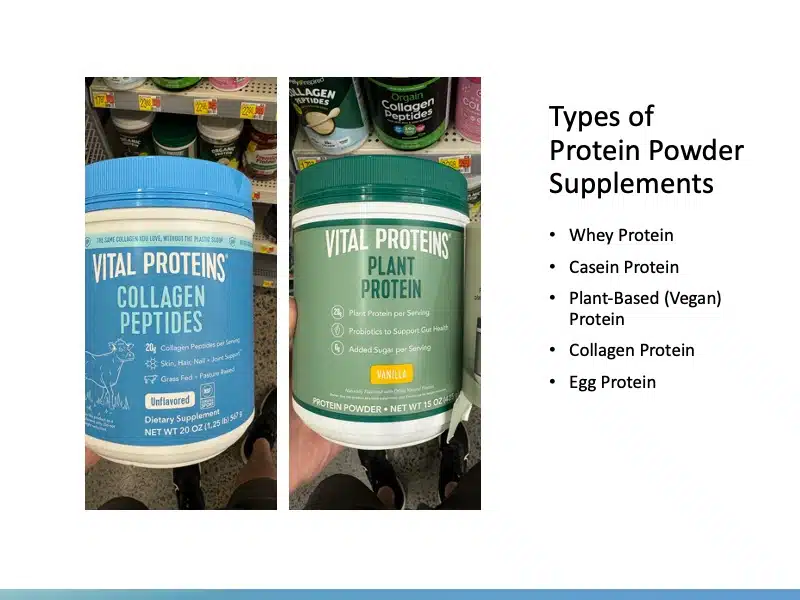
Protein powder supplements, especially whey and plant-based options, can be a convenient way to meet your daily protein needs, which supports muscle retention, metabolism, and appetite control.
Higher protein intake also increases the thermic effect of food (TEF), meaning your body burns more calories digesting protein than carbs or fats.
Look for clean protein powders with no added sugars or artificial ingredients.
In my opinion, the best protein powder supplement for weight loss is Garden of Life Protein & Greens:
Last update on 2025-04-22 / This article includes affiliate links/Images via Amazon Product Advertising API. I may earn commissions on purchases made through these links.
Green Coffee Bean Extract
Contains chlorogenic acid, which may help reduce carb absorption and improve fat metabolism.
Apple Cider Vinegar
Apple cider vinegar may help reduce appetite and stabilize blood sugar levels, although its impact on fat loss is minimal.
Turmeric (Curcumin)
Some studies have shown that turmeric is good for weight loss, can reduce inflammation, and supports metabolic health, especially when combined with black pepper for absorption.
Conjugated Linoleic Acid (CLA)
Conjugated Linoleic Acid (CLA) is a naturally occurring fatty acid found in meat and dairy products, often marketed as a fat-burning supplement. It’s believed to help reduce body fat by increasing fat breakdown, reducing fat storage, and supporting lean muscle retention.
Some studies have shown that CLA supplementation may lead to modest fat loss, particularly in overweight individuals, but the results are inconsistent.
While it may help reduce fat mass slightly over time, the effects are generally small and may take several months to become noticeable.
Additionally, high doses of CLA have been associated with digestive issues and potential impacts on insulin sensitivity, so it’s important to use it cautiously and within recommended dosages.
Last update on 2025-04-23 / This article includes affiliate links/Images via Amazon Product Advertising API. I may earn commissions on purchases made through these links.
Step 10: Track Progress Without Obsession
Tracking your progress is essential for staying motivated and making informed adjustments, but it’s just as important to avoid becoming obsessed with the scale.
Weight can fluctuate daily due to factors like hydration, digestion, and hormone levels, so weighing yourself once per week is more effective than checking every day.
To get a clearer picture of your fat loss progress, track multiple metrics, such as:
- Waist and hip measurements to monitor fat loss around the midsection
- Progress photos taken in consistent lighting and clothing
- How your clothes fit, especially in areas like your waist, thighs, and shoulders
- Energy levels, sleep quality, and recovery, which reflect your overall wellness
For more accurate insights, consider using a smart scale like the Bodypedia Smart Scale or another reliable model.
Last update on 2025-04-22 / This article includes affiliate links/Images via Amazon Product Advertising API. I may earn commissions on purchases made through these links.
These devices provide data on body fat percentage, lean mass, water retention, and more, helping you focus on body composition improvements, not just weight changes.
If progress stalls, don’t panic.
Plateaus are a normal part of the journey. Instead, review:
- Your calorie intake and portion sizes
- Daily NEAT activity and step count
- Sleep quality and stress management strategies
Refine your habits gradually and remember: consistency wins.
Focus on long-term trends rather than day-to-day fluctuations, and you’ll stay on track toward sustainable fat loss.
Final Thoughts: Weight Loss Tips for Summer That Actually Work
Sustainable fat loss doesn’t require starvation, extreme workouts, or punishing yourself into results; it requires a smart plan, consistent habits, and a mindset focused on progress over perfection.
If you’re aiming to build your dream body, it starts with treating your body with respect, not restriction.
Summer offers the perfect opportunity to reset your routine, enjoy outdoor activity, and take advantage of seasonal foods that naturally support fat loss.
It’s also a great time to take meaningful steps toward the aesthetic body you’ve envisioned—leaner, more defined, and healthier overall.
If your goal is to feel stronger, more confident, and finally reveal your bikini-body, focus on honoring your body’s needs:
- Fuel with nutrient-dense, whole foods.
- Move your body daily in ways you enjoy.
- Stay hydrated and prioritize quality sleep.
- Manage stress and track progress with perspective.
Whether you’re just getting started or gaining momentum, remember: real transformation comes from consistency, not intensity.
Each habit you build brings you closer to the aesthetic body you desire; not just for summer, but for life.
Stay patient, stay committed, and let every small, sustainable step move you closer to your dream body—a strong, confident, and healthy version of yourself you’ll be proud to show off all summer long.









